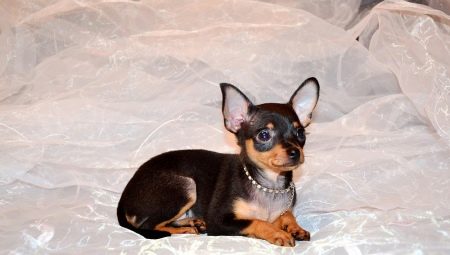Recently, miniature dogs have become very popular and in great demand. Indeed, they do not take up much space, they eat food in small quantities, they easily take root in the most ordinary apartment. And the process of educating these cute creatures is much easier than training large breeds. It may seem that pocket dogs do not require much care, but in fact this is not so.
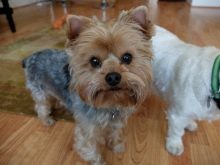
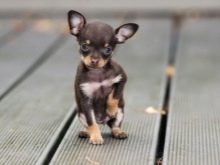
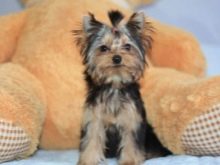
Description
Pocket dogs have always been in demand among the fair sex, children and the elderly. Men are more likely to have large breeds of dogs, but sometimes they allow themselves to play with the kids.
The name "dwarf dogs" carries a semantic representation of miniature breeds having a wide variety of species and subspecies with many identical appearance features.
The main similarity between the miniature four-legged friends is their height, not exceeding 20 cm. The mass of dwarf dogs depends on the breed and ranges from 600 g to 2 kg.
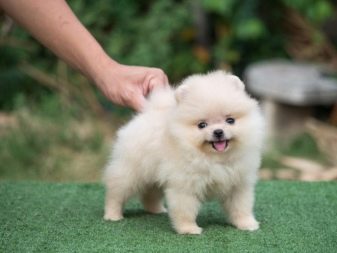
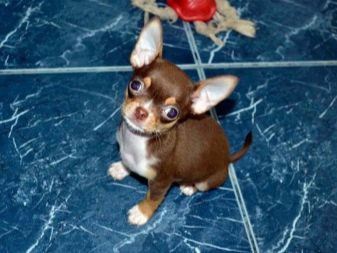
In the world of dog handlers and professional breeders, the concept of "pocket dogs" is not valid. In fact, this name is a marketing ploy. A well-established phrase among ordinary inhabitants means dogs whose size corresponds to the dimensions of cats. And fluffy kids do look like plush toys.
The International Association of Cynologists recorded a special classification of miniature dog breeds, or, as it is also called, toy breeds, where according to the standard the height of the pets at the withers should be up to 28 cm, and the weight should not exceed 12 kg.
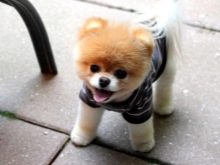

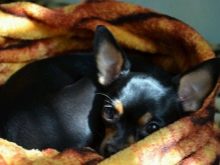
Every year, the demand for miniature dog breeds increases significantly, which is used by unscrupulous breeders, the purpose of which is only to make large profits. They specifically cross the smallest dogs for puppies. And after they put them up for sale, setting the cost increased by 3, or even 4 times, than the price stated in the official nursery. At the same time, puppies, after such risky selection procedures, probably have congenital diseases and numerous health problems:
- disorders on the genetic background;
- brittle bones;
- low immunity;
- underdevelopment of internal organs;
- short life.
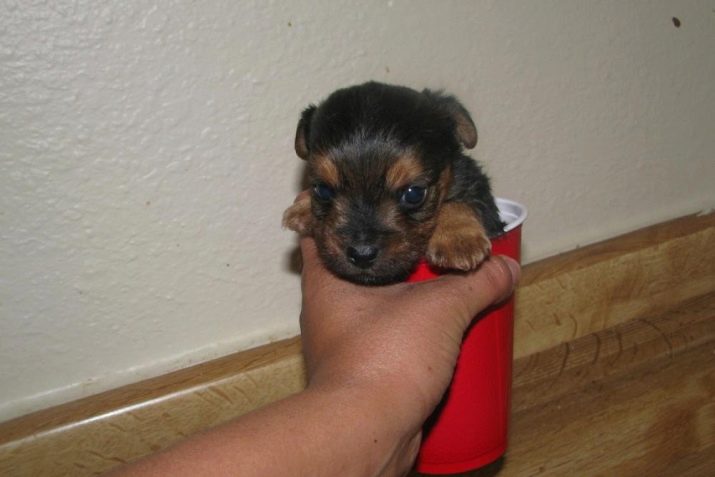
Dwarf dog breeds are small lumps of happiness with which it is pleasant to go out and enjoy the enthusiastic looks of others. Most often, these miniature creatures spend time in their arms, and yet they need to go down to earth to relieve themselves, although they do not need a long walk.
Despite its small size, mini-dogs easily get along in the same territory with other pets. They eat very little. If you feed a dwarf dog with dry food, then one big bag is enough for the animal for a whole year.

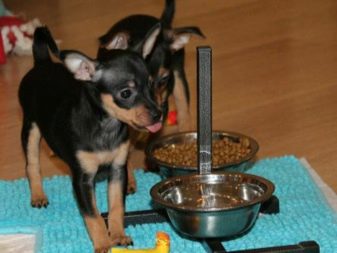
Due to their size, pocket creatures do not require much space for living, for them it is enough to install a decorative house or lay a stove bench in the corner of the room. The rest of the dog’s house space will be enough for games and active pastime.
Families who love to travel can bring their dwarf pets with them. The compact forms of the animal allow it to be placed in a small carrier, where the dog will not interfere with other passengers.
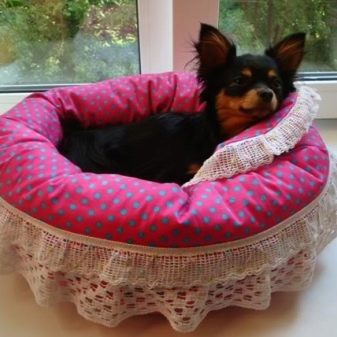
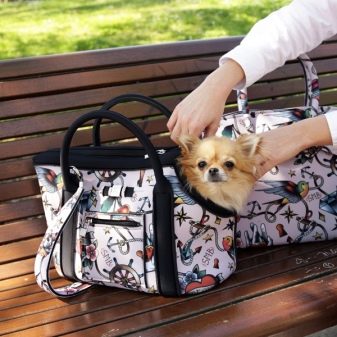
Advantages and disadvantages
Pocket-dog breeders maintain that The main disadvantage of representatives of miniature breeds is their tendency to various diseases.
They have a very fragile skeleton. If the dog jumps from a height, for example, from an armchair or sofa, it can earn itself a fracture of the limbs. Similar troubles can arise during active games of an animal. It may seem that pocket dogs can harm your body even in a dream, although there are many cases in history where a miniature pet, being in its owner’s pocket, broke a paw during an unsuccessful turn.
Another disadvantage of pocket rocks is an underdeveloped jaw. Due to the small size of the mouth, there is a high probability of the absence of several teeth, which negatively affects the digestive system of the animal.
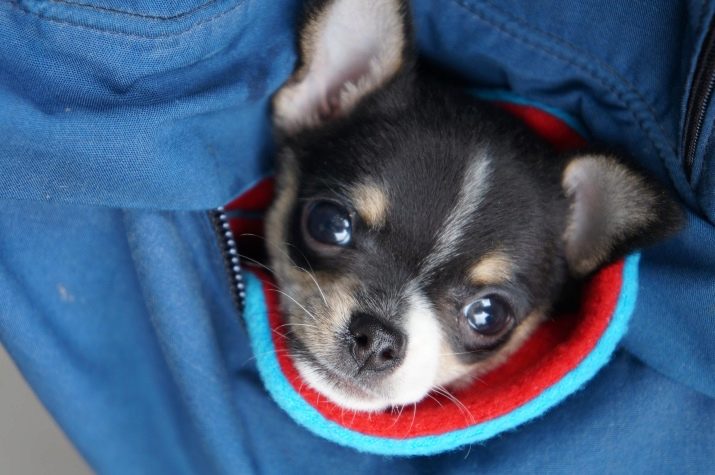
An important problem of dwarf dogs is a constant feeling of hunger. Despite the correctly composed diet, kids are not averse to feasting on extra snacks.
In addition, dogs of miniature breeds are not able to independently maintain body temperature. Many of them suffer from low blood glucose.
It may seem absurd to some, but even common diarrhea in pocket pets can lead to their death. For this reason, it is very important to contact the veterinarian in time for any pet ailment.

Miniature dogs mostly sit in the hands of their owners and very rarely walk on the ground, which causes problems with the violation of their socialization. Some babies become aggressive, begin to suffer from nervous disorders, are afraid of the environment. To cope with these problems, the animal needs to be taken outside more often, to acquaint with relatives and give to communicate with children.
Dwarf dogs are very intelligent creatures, they have a sufficiently developed intellect. Some representatives of miniature breeds boast of courage and often play the role of signaling.
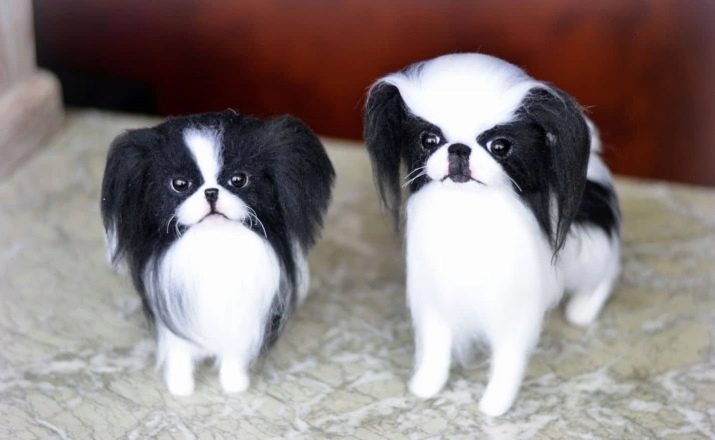
Special attention should be paid to the advantages and disadvantages of communicating pocket dogs with children. In most cases, the relationship between them is rather warm. However, it is important for adults to remember that a dog is not a toy. And this fact must be explained to the child. Dwarf dogs very quickly get used to children. They enjoy and play together with great pleasure. The dog also acts as a bodyguard. Of course, he will not rush into battle to protect the baby, but with his loud bark he will notify adults about the impending danger.
Pocket dogs are inherently unpretentious and very convenient to maintain, but despite this, they need careful care. For this reason, the issue of acquiring a miniature dog should be decided at the family council so that everyone can express their opinion. To keep your pocket pet safe care responsibilities must be shared among all family members.

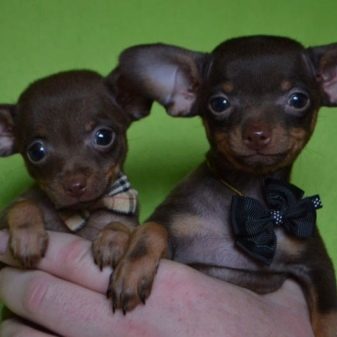
Varieties
Today there is a huge variety of pocket dog breeds, each of which has its own distinctive features. Some may be fluffy, others are smooth-haired, some have a short tail, others have a long tail. Despite these differences, each breed is extraordinary and has a magnificent charm.

Yorkshire Terrier
These dogs are cheerful and sensitive creatures and require the attention of the owner. They are very active, love to play and walk. The standard of the described dogs does not imply a low gradation of weight. The main thing is that the mass of the animal should not exceed 3 kg.
Caring for a terrier does not cause a huge amount of trouble. Without much difficulty they are accustomed to the tray.
The length of the Yorkshire Terrier's coat is regulated by the owner. For show representatives of the breed, its length must reach the floor. In pets kept for the soul, the hair is cut short.

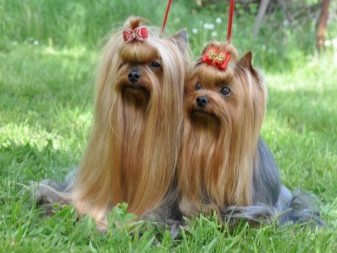
The Yorkshire Terrier needs regular brushing, eye treatment, and ear and tooth brushing. The nails of the dog are trimmed only if necessary.
In matters of health, the main problem of this breed is the delicate gastrointestinal tract. And if you pamper the baby with constant sweets, he may have obesity, which will negatively affect the work of the heart muscle.

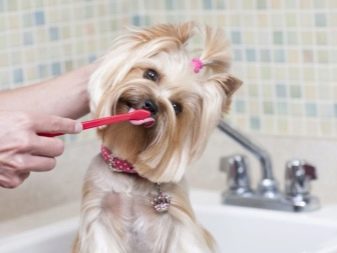
Russian toy terrier
This breed of dog is the pride of Russian dog handlers. They achieved recognition 13 years ago, after 50 years of enhanced selection. To date, there are two subspecies of the described breed, namely the “standard” and “mini”. The maximum weight of mini-dogs is only 1.5 kg.
Russian tois are very strong and hardy, although they have a fragile physique. It is important for the owner to ensure that the animal did not jump from a height of more than 40 cm.
These adorable kids are characterized by wayward temperament. For example, males can provoke other large animals to battle. It is undesirable to leave the Russian toy alone with the child, otherwise the animal may misunderstand the actions of the baby.
Russian toy perfectly adapts to urban life.
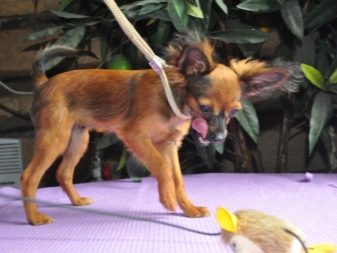
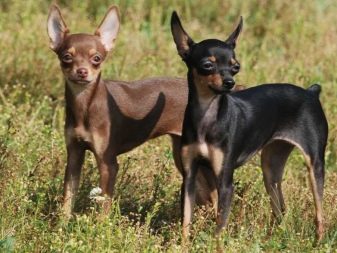
Chihuahua
According to statistics, it is precisely the Chihuahuas that occupy the leading position among miniature dogs. According to the breed standard, the weight of these babies should not exceed 1.5 kg.
The temperament of these charms is characterized by agility and courage. These dogs sensitively feel the mood of their master, try to always be near him, thereby taking an active part in all domestic affairs.
By their nature, chihuahuas are considered the most healthy representatives of pocket dogs. High-quality care for animals raises their immunity, respectively, dogs do not suffer from various diseases. And yet they have tendency to allergies.
The only negative is that female chihuahuas cannot give birth on their own. Therefore, the entire pregnancy and especially during childbirth, the animal should be under the supervision of doctors.


Papillon
The second name of this breed is the Continental Toy Spaniel. Some breeders call them butterfly dogs, all due to the unusual shape of their ears.Dogs are tiny in size, but despite this, they have a strong skeleton and harmoniously composed physique. Unlike their relatives, papillons are distinguished by developed muscles and strong joints.
These are quite smart and agile creatures.. They need a constant workout. An important fact is that they are quickly trained. The only drawback in raising an animal may be the wrong approach of the owner himself, because of which the dog can become aggressive.
In addition, the papillon does not perceive loneliness. They are strongly attached to the owner and his family.
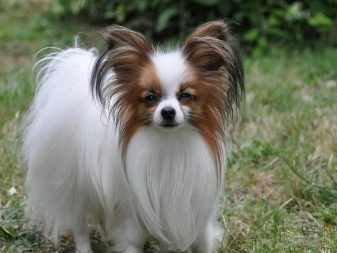
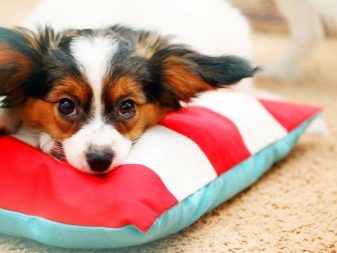
Toy fox terrier
A distinctive feature of this breed lies in charming ears resembling a bat. By nature, the Toy Fox Terrier is an excellent companion and a true friend of the whole family. His tirelessness allows him to accompany the owner for hours on the street and help him with household chores.
These kids can not be attributed to a pocket variety of dogs. Hunting blood flows in their veins. And with their loud bark, they report the penetration of strangers into the private territory.
Caring for that Fox Terrier is quite simple. Each walk should not be more than one and a half hours. The baby's fur coat needs to be scratched only once every two weeks.
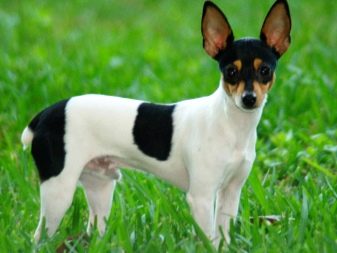
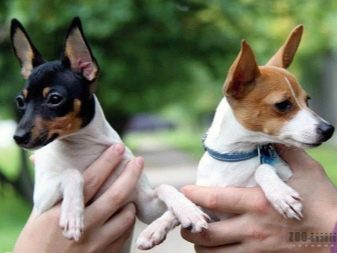
Japanese chin
These charming creatures are considered indoor dogs. They are the true friends of man. Hins easily adapt to the life pace of their master. If the owner of the dog is a homebody, the animal with great pleasure will simply lie next to him, while the dog will accompany the active owner even during long walks.
Hins, by their nature, do not take a rude attitude. The educational process should be based solely on praise. Screaming and anger are unacceptable in relation to this pet.
Despite the charming long hair, the grooming for the animal does not occur. These kids practically do not get dirty, the wool does not stray into tangles. Just scratch the dog a couple of times a week.
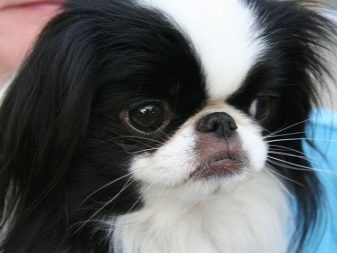
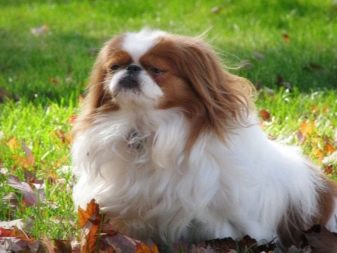
Petersburg orchid
A fairly young breed, bred in St. Petersburg in 1997. It is very difficult to see these dogs outside the city. To date, this breed has not yet received recognition from the cynological association, this issue is still being resolved.
Caring for these pets is not a hassle, it is enough to wipe the eyes of the animal every day, once every 3 days, scratch the hair, brush your teeth and examine your ears.
Hair cutting must be done once every two months. Bathing animals should only be necessary.
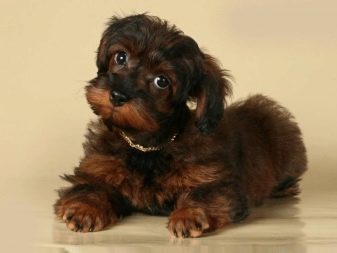

Petersburg orchids are the most suitable pets for calm people and couch potatoes. Instead of walking, they would be happy to stretch out on a couch and disappear in a sweet dream.
It should be noted that representatives of this breed are clean creatures. They try to put themselves in order on their own, because they do not like to be dirty. They hooligans extremely rarely.
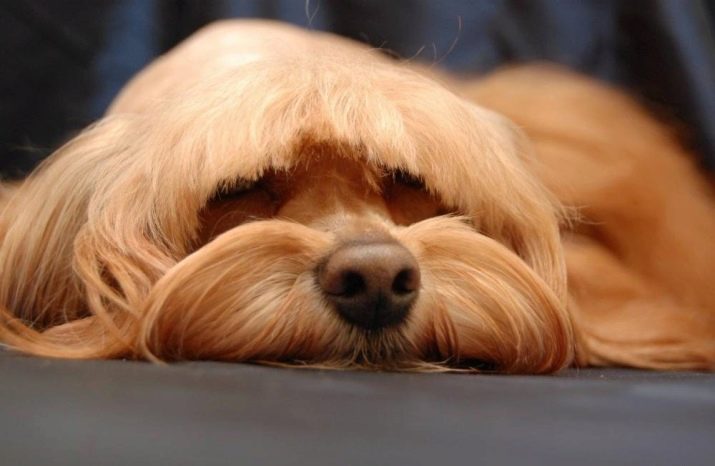
Toy poodle
These dogs are considered the smallest creatures and are acquired exclusively for apartment life.
Toy poodles are very friendly creatures, especially towards young children. But they can’t find a common wave with other pets.
Grooming is a separate issue. It is not worth it to create a haircut yourself for this dog, it is best to contact a professional. A dog should be bathed often, it is necessary to scratch every day. Toy poodles love to walk, and during walks the owner needs to arrange physical activity for the baby.
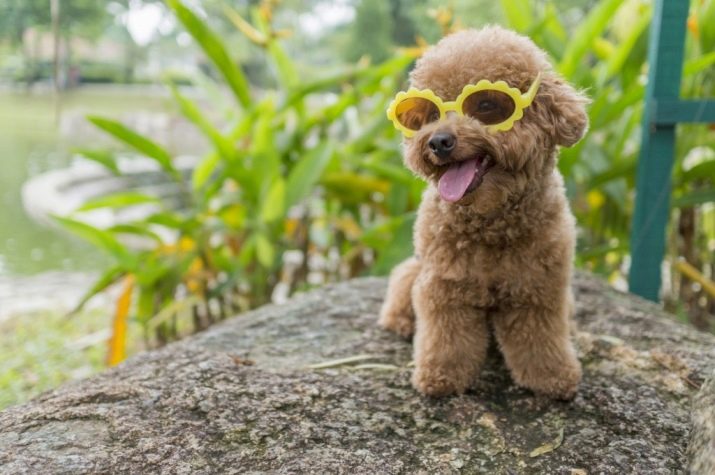
How to choose a puppy?
If the answer to the question of acquiring a tiny pet turned out to be positive, you can proceed to the selection of a suitable pet. In order to prevent mistakes and buy a healthy purebred puppy, you should use the advice of experienced breeders.
- Breed of dog. When choosing a representative of pocket dogs, it is necessary to be guided not only by the external data of the animal, but also by its character and temperament.
- Quality breeder. When choosing a nursery, you need to find out information about the breeder himself, if possible, ask his other customers.
- Dog size. Look for the tiniest creatures should not. For any breed of miniature dogs there is a mandatory standard. If the animal has a mini-size, then in the future he will definitely have health problems.
- The inability to predict the size of the puppy after a period of active growth. No breeder can say for sure how the puppy you like will grow. The statement that an adult will be miniature in size should focus on. The height and weight of an adult must meet the standards of the chosen breed. Although there were cases that a tiny puppy grew much larger than his brothers and sisters.
- Falsification. No self-respecting breeder will assure a potential buyer about the existence of pocket dogs. Professionals say this about small sized pets. And amateurs are engaged in falsification of documents, prescribing in them the increased age of the animal. Thus, a three-month-old puppy can become a one-year-old dog with miniature sizes.
- Communication with the dog. A personal meeting and acquaintance with a pet you like will allow you to identify his character traits and recognize his temperament. It is best to choose a dog that confidently goes into the hands of a person. In addition, the dog should be playful and safely take food from unfamiliar hands.
- The possibility of cheating. Unfortunately, a simple layman is very easy to fool. In order to avoid such troubles, before going to the kennel, the potential owner needs to go to the site for dogs or to an exhibition of animals. It is there that you can see with your own eyes the adults of the breed you like.
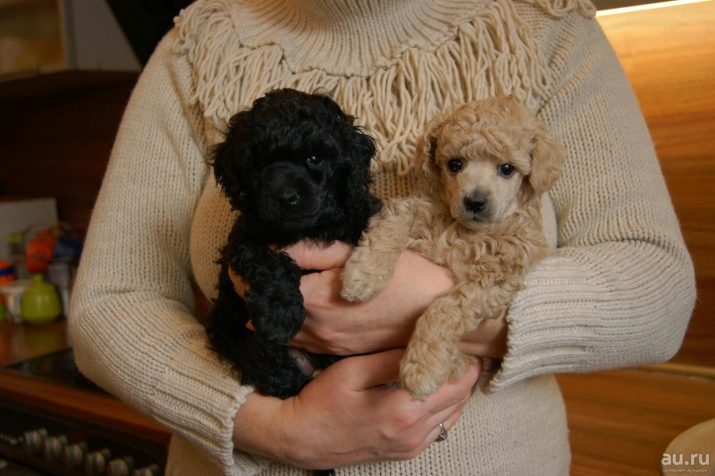
About the six smallest dog breeds in the world, see the next video.
